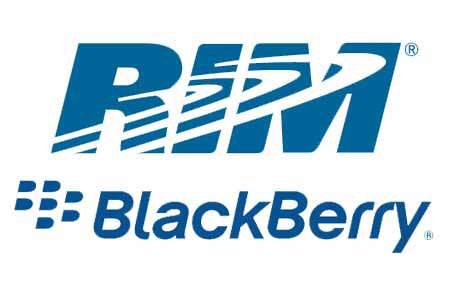

PHOTO:
Stefan Widua | unsplash
The pandemic has catalyzed an en-masse move to hybrid workforce models across industries and functions, including marketing teams. Add to this the broad changes in consumer behavior and market expectations resulting from the disruption of the last 15 months. How has all of this change impacted marketing priorities?
Here are five dominant themes on marketing leader’s radars right now:
1. CX as the Central Component of DX
While DX has been a priority for a while now, what’s changed is the race to connect customer experience (CX) to the DX initiative. Over the last year digital engagement has been at times the only way to find, get and keep customers. Starting with overhauling virtual shopfronts — aka brand websites — to investing in more advanced data-driven marketing decisioning engines, making CX central to the digital strategy has become primary.
James LaJoie, co-owner and COO of PSP Compass Solutions said his company saw a big increase in clients optimizing their website for online use, including user design and interface. Salesforce implementation consultancy Lev has seen greater interest in transforming the customer experience via technologies such as CDPs — even though, as regional vice president Bobby Tichy shared, several can’t yet clearly explain why they’re choosing this route.
Whatever the technology, loving your customers has certainly been a recurring theme on Erica Seidel’s CMO Power Hour, a round table for SaaS CMOs she’s hosted since the start of the pandemic. CMOs are acting on this with close listening, unearthing new use cases, focusing on retention, doing ‘living personas’ (inviting real customers for a 1:1 Zoom call) and incentivizing sales to ask customers for referrals. Distilling customer expectations from brands into: “Make it Easy, Know Me, Value Me, and Protect Me,” Christine Crandell, president of customer alignment consulting firm New Business Strategies added that heightened customer expectations with low tolerance for brand missteps means omnichannel engagement is table stakes. “Customers also expect contextual personalization, delightful engagement, and credible use of customer data.”
Related Article: How COVID-19 Changed Marketing
2. Marketing Talent Acquisition
Hybrid workforce models have somewhat changed the game for functions such as marketing, which lends itself well to remote work. The best and most cost-effective global talent is now within reach, for everything from SEO to content creation.
Many marketing professionals have also gone freelance in the last year, either as a matter of choice or redundancies at work, and are now offering their expertise on a project basis. An increased focus on elevating team diversity is also a cause helped by the option of remote work. Seidel, who discusses B2B workplace diversity with SaaS CMOs in her podcast The Get, agreed that “within marketing ‘org stacks’ and across tech companies in general, diversity is an important consideration for CMOs as they build out the new workforce models for 2021 and beyond.” But the uncertainty also means that CMOs are thinking about how to structure their teams for the next six months, not necessarily for longer.
Related Article: What Are the Bare Necessities of a Remote Marketing Team?
3. Dealing With Uncertainty and Planning
Grappling with unpredictability is a big theme for CMOs right now. Some CMOs are trading off lead generation by pausing marketing spend and re-allocating budget to the back half of the year, hoping it will provide more predictability, while others are doubling down on customer engagement and acquisition. Decision-making authority has migrated up in many organizations, while others are using this time to empower more people across the functional hierarchy.
On the marketers side, Charles Gold, CMO of network security platform FireMon said that he’s seen a renewed focus on vendor relationships. “As a cybersecurity company serving the largest, most complex enterprises in the world (think big banks, retailers, insurers, and healthcare providers), I see many of them making choices on long-term strategic vendors, and focusing on forming multi-year strategic plans and roadmaps over the last one year. They’re looking for a greater level of partnership and collaboration from their partners.” The pandemic has effectively demonstrated to both — marketers and their vendors — that partnerships not based on collaboration and value creation tend to crumble in times of economic stress.
Related Article: Marketing in a Time of Crisis
4. Changing Marketing Tactics and Tools
Perhaps as an extension of the focus on relationships, B2B CMOs have really leaned into ABM, leveraging the many available ABM platforms and tools over the last year. “Some companies are also starting to report on ABM vs. non-ABM deals,” said Seidel. FireMon deployed a platform to enable their ABX (account based everything) strategy mid-last year, to deliver actionable intent data and better focus advertising spend and BDR team activities. Gold called it a game-changer for the business.
Retail consumer-focused CMOs are also engaging in faster and more well-defined cycles of ‘test and learn’ than before. It’s no longer something to do ‘on the side’ when extra budget is available, but as a way of making frequent incremental improvements in strategic outcomes.
Inbound marketing is getting more interest due to its performance amid changing buyer preferences and the movement from offices to homes. Corina Leslie, PR manager at email marketing platform ZeroBounce, said that email has been their best performer when it comes to building a strong connection with our audience. More intentional content and SEO, as part of the larger inbound strategy, are also seeing higher investments. “The days of numerous outbound email campaigns, cold calling and oceans of content will be replaced by branded communities, syndicated content, precision marketing, and immersive engagement that educates as well as entertains,” added Leslie.
Related Article: What You Need to Enable and Sustain Marketing Agility
5. Team Management and Collaboration
An area that’s become high priority for marketing leaders is managing the team and deliverables in a hybrid and highly distributed workforce. “I’ve learned that I can definitely do way more of my job remotely than I had thought possible. But there are things — relationship building and creative collaboration — that are just better in person”, said Gold, who has run a distributed team since before the pandemic. Added Seidel, “Marketing leaders are thinking about how to give employees control and choice in a world that feels choiceless, as well as the right balance of flexibility, productivity and performance while preventing burnout. Progressing learning journeys is important too.” Crandell has seen more frequent and more focused conversations, with quick 10-minute calls to discuss specific issues. “I feel collaboration tools such as Slack, Teams and Meet have improved both — accountability and transparency.”
Chitra is a marketing practitioner who loves to observe, reflect, and write about events impacting modern marketing — and marketers. Chitra chronicles technology, disruptions, innovations, and the people shaping the space, with a special focus on marketing technology, customer experience and privacy related themes.






